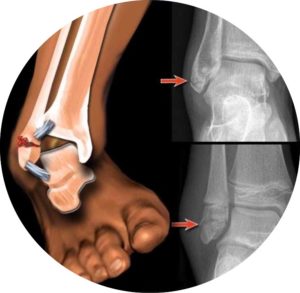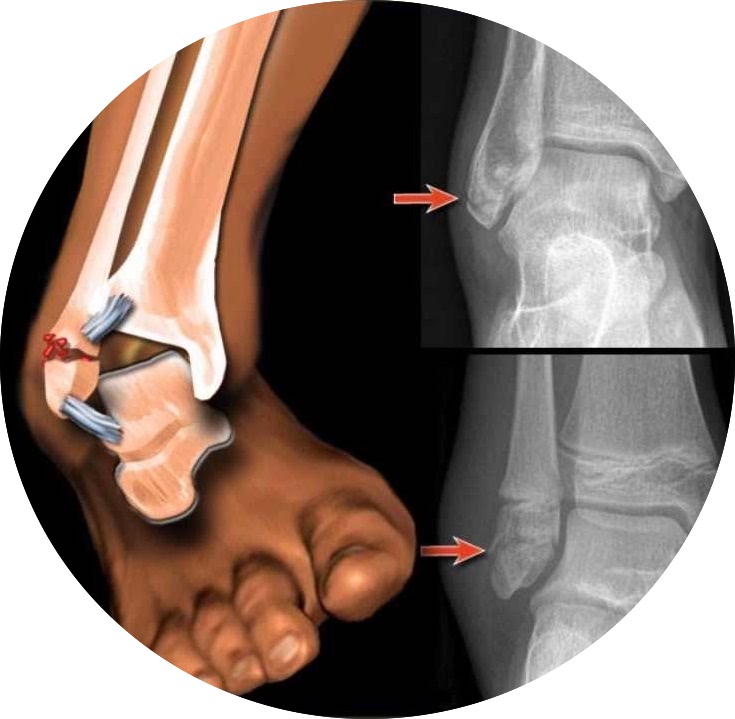 Ankle injuries are fairly common amongst all age groups. This makes sense, since ankles are one of the most important joints in the human body, and they are indispensable to mobility and walking. Your ankles have a wide range of movement; however, forceful trauma can cause sprained or fractured ankles.
Ankle injuries are fairly common amongst all age groups. This makes sense, since ankles are one of the most important joints in the human body, and they are indispensable to mobility and walking. Your ankles have a wide range of movement; however, forceful trauma can cause sprained or fractured ankles.
Cause
A fractured ankle usually develops after your ankle is forced to twist inwards or outwards forcefully and the joint stretches beyond its normal range of motion. You can also fracture your ankle after suffering from a traumatic event, such as a fall or car accident. Even jumping and landing the wrong way can cause a fractured ankle.
Symptoms
The symptoms of a fractured ankle are very similar to those of an ankle sprain: pain, swelling, and tenderness will appear shortly after the injury. You might hear a popping sound when the fracture occurs, and the joint might appear deformed. In severe cases, the bone might even protrude through the skin; this is called an open fracture.
There are several different ways to classify a fractured ankle, such as the Lauge-Hansen classification, which categorises ankle fractures by the mechanism that caused the injury. Another classification, called Danis-Weber, is based on the location of the fracture. There are other classification systems that are specific to certain types of ankle fractures, such as medial malleolus fractures, or Pilon fractures. Using these categorisation systems will help your medical team determine the severity of your injury and the treatment you need. In order to make this assessment, your doctor will order some X-rays of your fractured ankle.
In many cases, X-rays are also necessary to differentiate a fractured ankle from an ankle sprain or dislocation. Since the mechanism of the injury and the symptoms can be very similar for all of these conditions, X-rays and other imaging tests –such as an MRI- will be the key to making the right diagnosis.
Treatment
The treatment for your fractured ankle begins with rest. Depending on the severity of your injury, your doctor will tell you how long this period must be. During this period, you might need to wear a cast or walking boot in order to make sure the joint stays immobile. After your joint has had time to rest and heal, your podiatrist and physiotherapist will get you started on several rehabilitation exercises. As your strength and range of motion improve, the exercises will become more complex until you regain full mobility.
It is vital to go to the Physio for sprained ankle treatment. Leaving a sprained or fractured ankle untreated can increase the likelihood of suffering future injuries and/or developing chronic instability or pain in your ankle.










